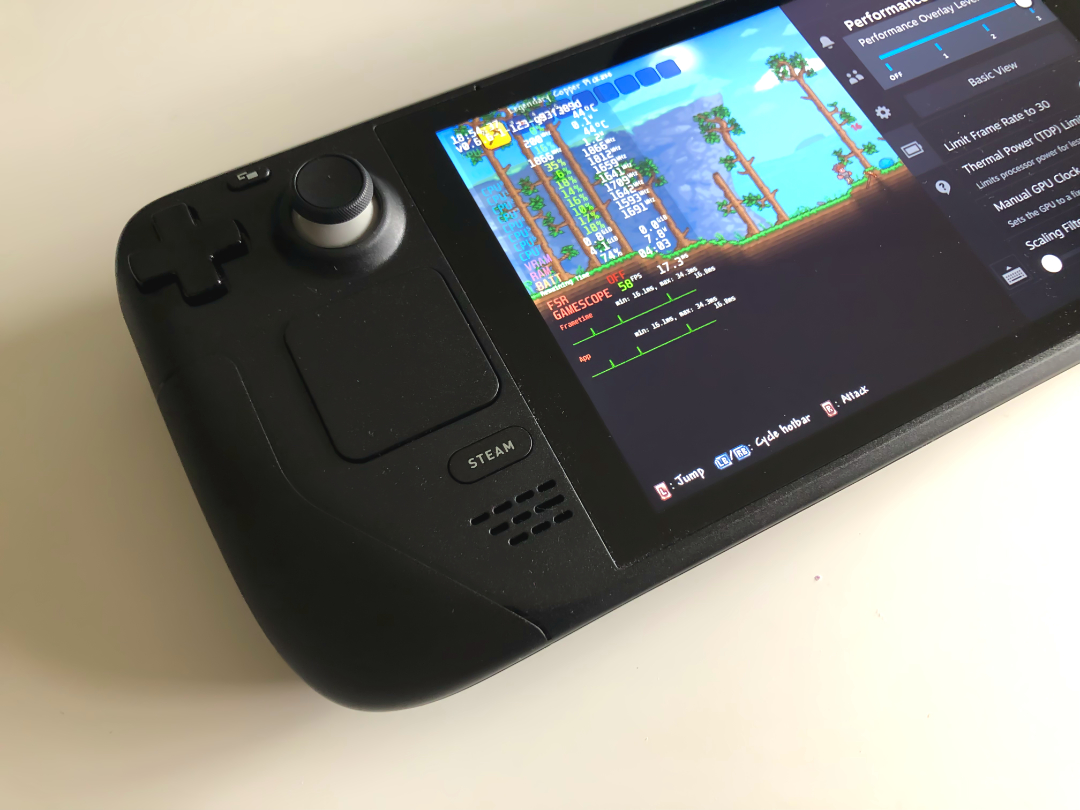Trying Out The Steam Deck
After four months of waiting, I finally got my hands on a Steam Deck! I am particularly excited to get to use this device a bit more because it’s basically the cleanest version of “Gaming on Linux” that you can imagine. It runs SteamOS, which is a derivative of Debian. It also runs Proton, which is Valve’s compatibility layer built precisely to help Windows-specific games run well on Linux.
I’ve been thinking for quite some time about switching some of my machines to Linux so that I can depend less on the Windows ecosystem. Most of the development and professional workloads are supported a-OK on Linux boxes (with the occasional hiccups that come with that software), but I still had a lot of games that I wanted to play that weren’t as good on any Linux distribution compared to running them directly on Windows.
Now, with Steam Deck, I have a wonderful testing surface to experiment with games and see how well they execute within a non-native environment since most of them weren’t designed around Steam Deck anyway.
Unpacking this device was nothing short of exciting, and I don’t use that lightly. It’s a pretty chunky piece of computing equipment, but with all the bells and whistles you’d expect from a portable console. It’s size speaks for itself, pictured below next to my old-school Nintendo Switch.

Because this is not a full review post, I will only share my early impressions - the experience, despite it’s “first release” nature, feels very polished. Navigating across menus, managing my library, switching between games, and many other seemingly insignificant interactions are very smooth. If this is what Valve sees as a Minimum Viable Product (or, MVP), then we should all draw inspiration from this effort.
I’ve ran into a few rough edges, like menu strings not being properly set up, being something like #TEST_STRING_REPLACE_LATER but this was far from common. Most of the games from my Steam library ran without issues, but some still have quite a few challenges, that are clearly marked by indicators in the SteamOS UI - you’ll never have to guess whether a game was fully tested or not. Some of the older games can be very inconsistent - Grand Theft Auto: San Andreas (the original, not the remake) works well enough to be playable, with the exception of some camera movement glitches. Grand Theft Auto: Vice City doesn’t run at all, although you can hear the sound - just no video output.
I am sure that as Proton matures, a lot of these issues will be hashed out. I knew what I was getting when I got on the waitlist and was fully prepared to see the experience I see today. Nonetheless, it’s also a handheld that doesn’t quite feel like a restricted handheld. I gotta give credit to Valve for really opening this device up in any way imaginable. Want to sideload games? Go ahead. Need to install a different OS? Sure, why not. Want to run emulators? Totally. It feels like you have a computer with a gamepad, rather than the other way around (i.e., a locked down game console).

You can also enable all sorts of diagnostic indicators on the screen if you’re one of those nerds that really cares about tracking game performance. Or, you know - if you’re a developer that needs to see how their game performs on the device.
I will have a more thorough review once I spend some time playing with it, but so far this is a very good sign for folks who want to run games on Linux. As Valve invests more time and effort in making Steam Deck a polished, production-ready device, I fully expect the fruits of that labor to trickle down to anyone who wants to run games on top of Proton with their distribution.